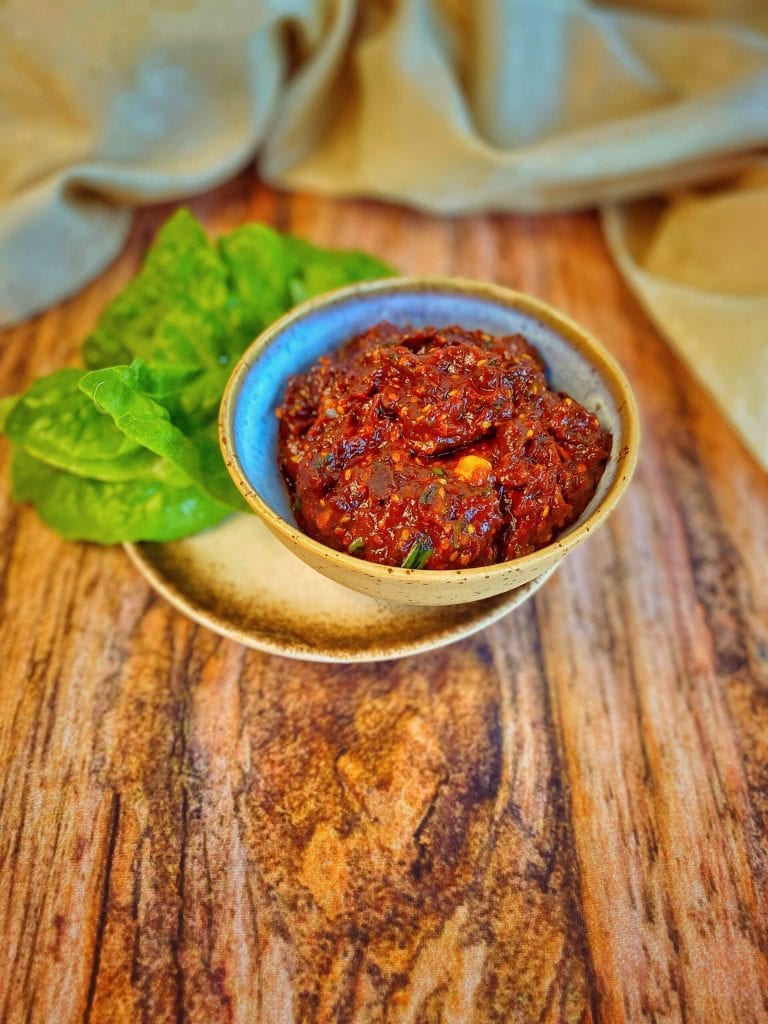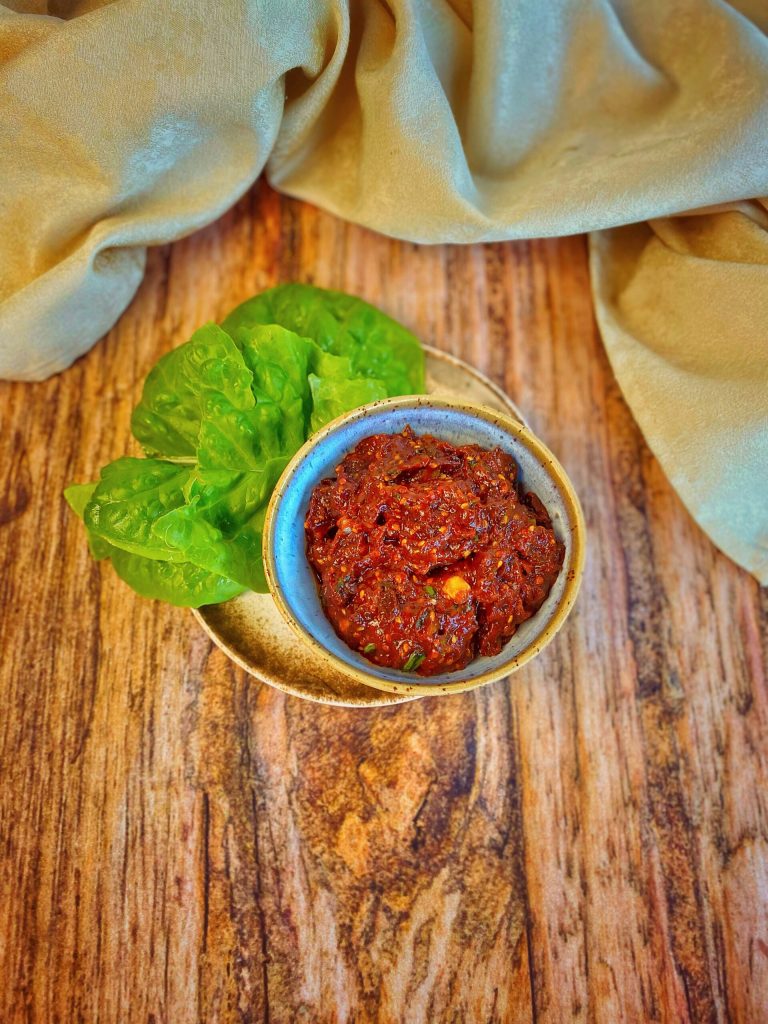Ssamjang (Korean: 쌈장) is a thick and spicy paste used for ssam, which is food wrapped in a leaf in Korean cuisine.
The sauce is made from fermented soybean paste (doenjang), red chili paste (gochujang), sesame oil, onion, garlic, green onions and, optionally, brown sugar.
Ssam means “wrapped” and jang means “paste” or “thick sauce”. Together as ssamjang, they mean “wrapping sauce”.
In addition to the standard way of preparing ssamjang, other ingredients can be added to create special versions.

- Difficulty: Easy
- Cost: Cheap
- Preparation time: 5 Minutes
- Portions: 4 People
- Cooking methods: No cooking
- Cuisine: Korean
- Seasonality: All seasons
Ingredients
- 1/4 cup doenjang
- 1 tablespoon gochujang
- 1 stalk green onion (chopped)
- 1 clove garlic (chopped)
- 1/2 onion (chopped)
- 2 tablespoons sesame seeds (toasted)
- 2 tablespoons sesame oil
Steps
Mix all the ingredients and blend until creating a thick paste.

There are also ready-made packages available on the market.
FAQ
What is ssam?
Ssam (Korean: 쌈) refers to Korean dishes where some foods are wrapped in other foods.
Ssam often consists of meat, like pork, wrapped in leafy vegetables.
It is often accompanied by a condiment known as, indeed, ssamjang, doenjang (된장), red pepper paste (고추장), and oil sauce.
It can also be seasoned with garlic, onion, green pepper, or a banchan (small side dish) like kimchi.
Ssam is usually small in size to prevent the filling from spilling out.
Various vegetables are used as ingredients, such as lettuce, cabbage, bean leaves, and pumpkin leaves, which are used raw or blanched.
Or even seaweeds like miyeok (미역) (sea mustard) and gim (dried seaweed).
Ssam can refer to dishes that use beef tongue, fish roe, pork, clams, or sea cucumbers wrapped and cooked in eggs.What are the variations of ssamjang?
Nut ssamjang (견과류 쌈장): with chopped nuts, pumpkin seeds, sunflower seeds, and other dried fruits
Jjukumi (쭈꾸미 쌈장): diced octopus is pan-fried with diced red peppers and onions and mixed together with ssamjang
Tofu (두부 쌈장): with chopped tofu
Flying fish roe ssamjang (날치알 쌈장)
Namul ssamjang (나물 쌈장): with various beans
River snail (우렁이 쌈장): boil water with doenjang, river snail, green onion, garlic, and chili powder.

